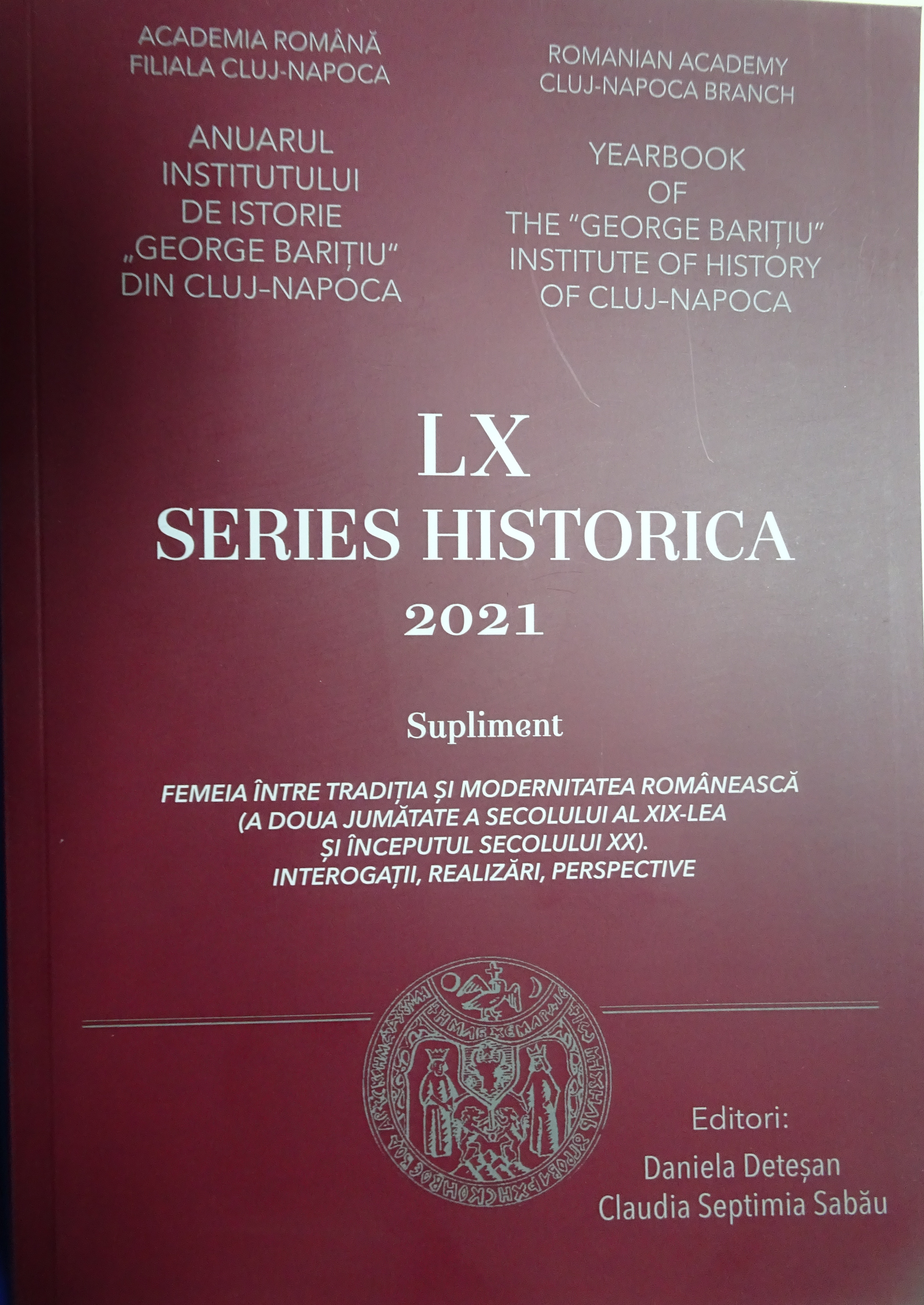Studente românce din Transilvania la universitățile europene (1895-1918)
Romanian Female Students from Transylvania at European Universities (1895-1918)
Author(s): Cornel SigmireanSubject(s): Gender history, 19th Century, Pre-WW I & WW I (1900 -1919)
Published by: Editura Academiei Române
Keywords: higher education; nineteenth century; Romanian female students; university cities; artistic and medical currents;
Summary/Abstract: The nineteenth century marked the triumph of women's right to education of all degrees, including university studies. In 1878 in the Austro-Hungarian Empire women were granted the right to participate to university lectures, as invited auditors. Unlimited access for women to the Empire's universities was obtained in 1895. As a result, the history of Romanian young women's presence in European universities began at the end of the nineteenth century. From our investigations, we concluded that 77 Romanian female students attended European universities between 1895 and 1918, the majority registered to universities in Budapest, Cluj and Vienna. As specialisations, 21 followed medicine and pharmacy courses, 33 letters and philosophy, 18 at the music academy at the canto and piano sections, 3 law, 1 student at the chamber of commerce (in Budapest), 1 in arts, in Vienna. Among them, some had brilliant career as artists, opera sigers, like Aca de Barbu, who held recitals in Karlstheater, Baden bei Wien, Teplitz-Schönau, Grün or Volksoper in Vienna, and after 1918 was Cluj Opera soloist and Timișoara Opera director, and Lucia Minodora Cosma, professor at the Bucharest Music Conservatory of Music. Among the medicine faculty graduates who met an exceptional career we mention Alma Popovici-Mohora, the first female stomatologist in Romania, Cornelia Moga, the first female radiologist in Romania, Elena Densușianu, married Pușcariu, Faculty of Medicine graduate at the University of Iași, specialised in Paris, the first female university professor in the medical field in Romania, the first female professor at an ophthalmology clinic in the world and the first women who obtained a doctorate in Romania. Most medicine and pharmacy faculty graduates asserted themselves as specialists after 1918, in the interwar era, their professional maturity period. At the end of the war, the Austro-Hungarian Empire crumbled, but the culture, education obtained in European universities by Romanian women permeated through interwar Romania's civilization and culture, adding experience to the ethnic and cultural plurality, specific to large urban centers, a premise for cultural interactions and creativity.
Journal: Anuarul Institutului de Istorie »George Bariţiu« - Series HISTORICA - Supliment
- Issue Year: LX/2021
- Issue No: 1
- Page Range: 151-162
- Page Count: 12
- Language: Romanian

